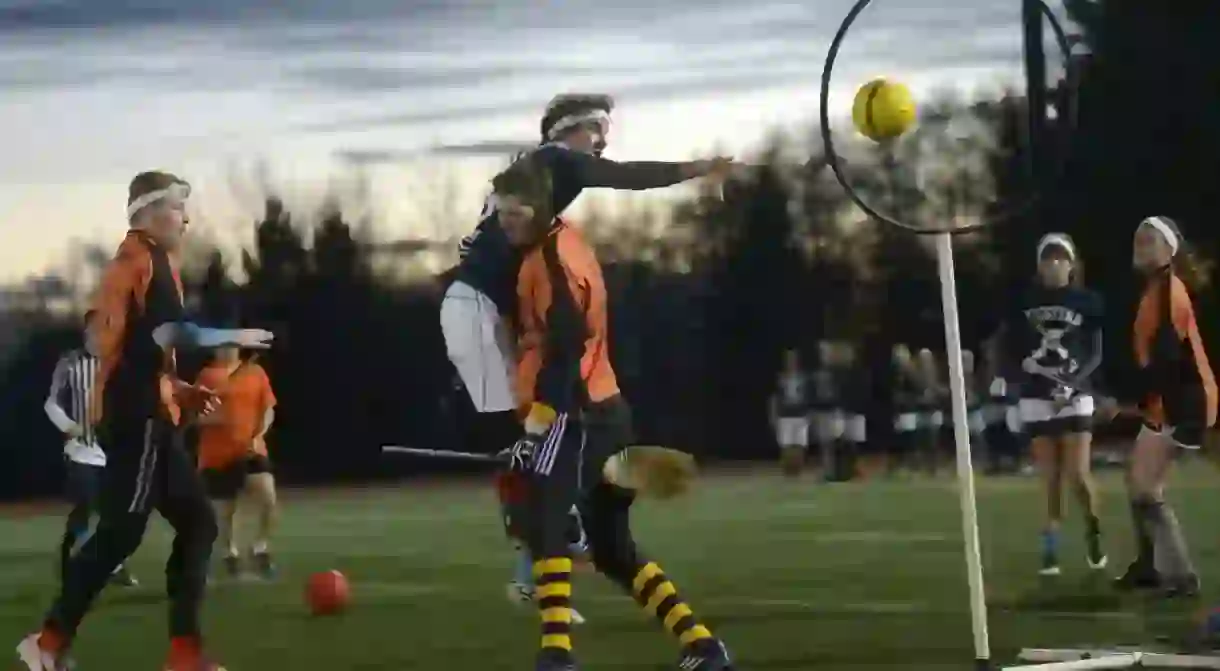According to Science, Quidditch Isn't a Healthy Sport for Muggles

So much more than fiction fueled with flying broomsticks and an elusive snitch, quidditch is no longer a sport solely for the wizarding world. But are muggles surrendering themselves to the Death Eaters by playing their own rendition of the game? Scientists in Scotland warn that this may be the case.
According to a recent health study published by the International Journal of Sports Physical Therapy, quidditch poses certain risks, specifically a high probability of concussion among players. The research, which was carried out by members of the medical school at the University of Edinburgh, highlights crucial talking points tied to such a competitive game.

This full contact mixed-gender sport, conjured up by J.K. Rowling for the Harry Potter series, has left the non-magic world spellbound since 2005 when it was first played in America. Now with a Quidditch World Cup and a Quidditch Premier League, its global presence spans 25 countries with around 20,000 players, including those in the UK, Australia, Brazil and Uganda, to name a few.
Unlike the fictional version, there is no flying involved. Rather, players must hold a broom (PVC pipe) between their legs for the duration of the match. The word ‘quidditch’ even made it into the Oxford English Dictionary in 2017.
Aimed to examine injury trends in mixed-gender contact sports, the research is essential in supporting the growth of quidditch as a legitimate and respectable sport. Out of 684 athletes, 348 responded to the study. In total, 315 injuries were documented by 180 players – that’s 4.06 injuries per 1,000 hours of play. Over 20 per cent of injuries were concussion. Once more, the report shows that female players sustained more concussions than their male counterparts:
‘Head and extremity injuries were the most common injuries observed in quidditch. This is a similar injury pattern seen in a study of youth rugby injuries. The concussion incidence rate is of particular interest.’

The absence of magic in muggle quidditch calls for some serious improvisation, which in some cases, can create injury. Take the snitch – ‘a human runner shielding a tennis ball in a sock hanging from the back of their shorts’. These golden athletes spend the entire game being hunted by the seeker, whose mission is to pin them down. Add the bludgers (dodge balls) and brooms (PVC pipes) and you’re looking at a potion of risky possibilities.
And while quidditch displays similarities with rugby – due to the lack of protective padding and full contact nature – muggles need not throw in the cloak just yet:
‘The overall injury rates are no higher than those reported in other recreational contact sports. Female athletes were found to have a higher rate of concussion, which needs further investigation. These findings are relevant to players concerned about safety in quidditch and to governing bodies regarding governance of the sport.’














